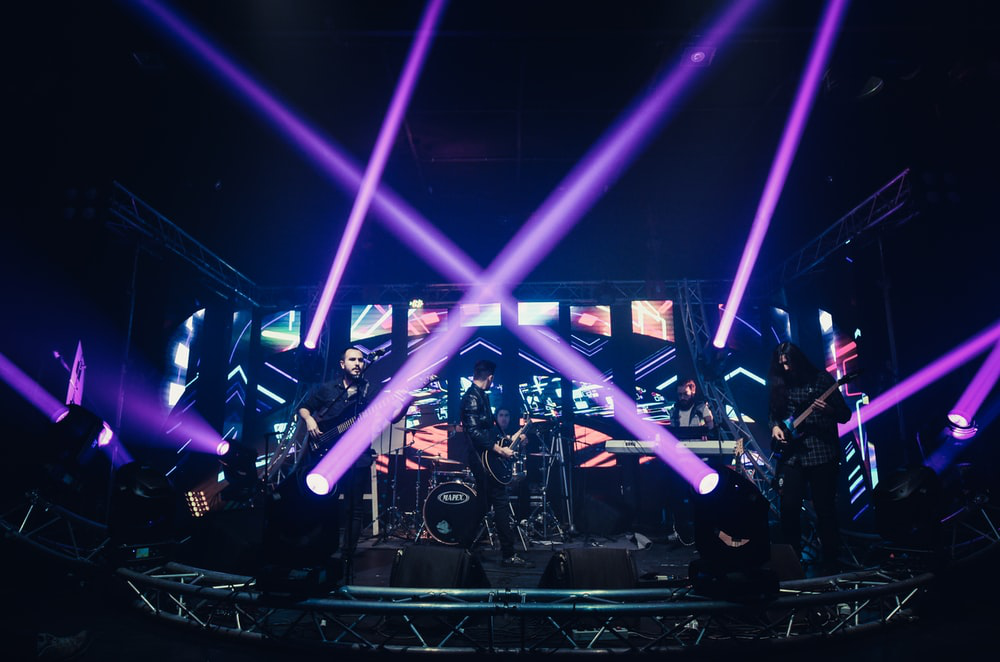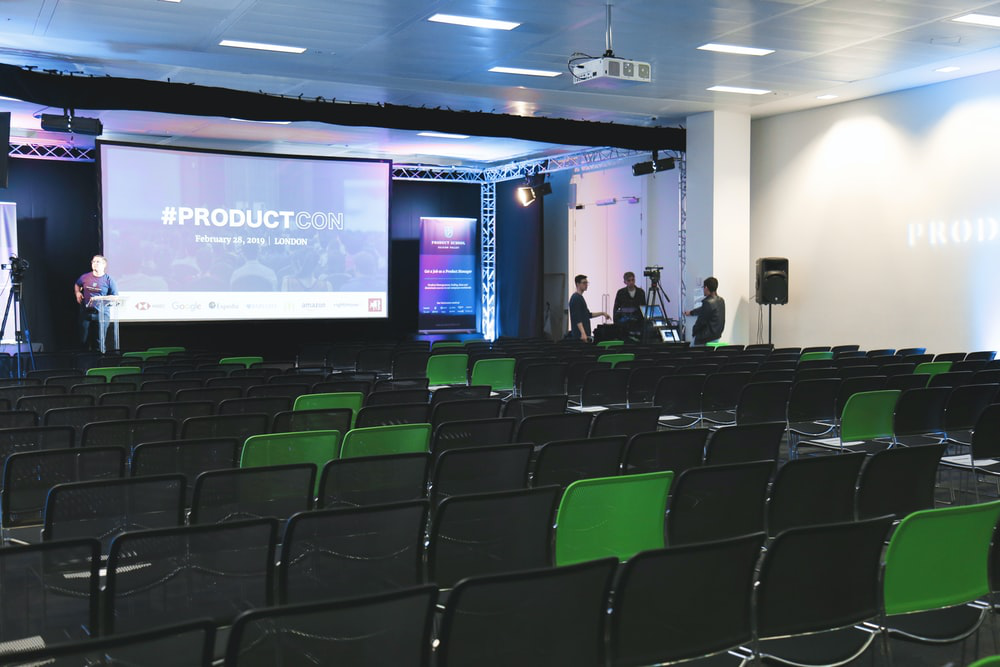time:2021-04-17 Views:71
1. General overview
In 2020, China's lighting industry exports reached 52.6 billion U.S. dollars, or 364 billion RMB, a year-on-year increase of 16.1%. Domestic sales were approximately 238.5 billion RMB, a year-on-year decrease of 16.8%. The global lighting industry revenue was 602.5 billion RMB. In general, export sales were better than expectation while domestic sales were lower than expectation. The sharp increase in export sales offset the decline in domestic sales, making the global lighting industry revenue basically the same as in 2019 (600 billion RMB).
In view of the changes in lighting industry revenue from 2010 to 2020, the entire lighting industry is still in a period of medium-to-high-speed growth during the "Twelfth Five-Year Plan" period, the growth rate tends to be flat during the "Thirteenth Five-Year Plan" period, entering a period of stable development. In the future, the customers will pay more attention to a high-quality products.

2. Export
In 2020, in the face of the severe impact of the COVID19 epidemic on the global market and the extremely complex international situation, China government introduced a series of unconventional policies and measures to stabilize foreign trade and promote innovation. Under the joint efforts of the majority of lighting export companies, the export of China's lighting industry grew against the trend in 2009 with a total export value of 52.6 billion U.S. dollars, a year-on-year increase of 15.7%. This figure is not only far exceed expectations, but also sets a new historical record. The first-quarter sales dropped sharply and reached the bottom; the offensive and defensive transition in the second quarter was ready to go, the third and fourth quarters rebounded strongly, setting new highs repeatedly and finally reached a "V"-shaped reversal. As the only major economy in the world that has comprehensively and systematically contained the epidemic, China has further highlighted its status as the global manufacturing center and supply chain hub of the lighting industry.
The reason for the growth is that the strong demand for lighting products has demonstrated its resilience; epidemic prevention and housing economy products have become a boost; the margin of external demand has gradually improved; and the "replacement transfer effect" is significant.
In terms of export products, the replacement of lamps is progressing steadily; the price of LED lamps continues to decline; the shipments of LED filament lamps are increasing; the export of anti-epidemic related products such as scientific research, medical treatment and ultraviolet are growing rapidly.
In terms of export markets, the Asia-Pacific markets dominated by emerging economies performed significantly better than the European and American markets dominated by developed economies. In the Asia-Pacific market: East Asia, West Asia, Southeast Asia, and Australia have performed well. In the European and American markets, the recovery of the North American market is better than that of the European and Latin American markets.
The difficulties faced by export companies are declining product prices, sharp fluctuations in exchange rates, rising prices of raw materials and components, shortages of stocks, container shortage in the shipping industry and power outages in some countries.
3. Domestic Sales
From the perspective of supply and demand, the recovery of the supply side of the relatively centralized decision-making organization is better than the demand side of the decentralized decision-making response. From the demand side, under the background of the country's full investment in the "two new and one focus" in 2020, the performance of the commercial market driven by investment is much better than the residential market driven by consumption. Roads/tunnels, rail transit, education and other fields performed more prominently, while the residential market which is dominated by home lighting was dragged down by the structural decline in social employment and income caused by the epidemic. It took a long time to recuperate and build confidence. According to statistics from the Bureau of Statistics, China's retail sales of consumer goods other than automobiles ie about 35 trillion RMB in 2020, a year-on-year decrease of 4.1%.

Opportunities and challenges for domestic sales in recent years:
01. Channel changes
The biggest change is the diversion effect of new channels, squeezing the space of traditional channels. The traditional retail and wholesale channels or engineering channels are currently affected by the diversion of the new channel models to some extent. The commonality of these new channel models is that it has a higher requirement of the brand of lighting suppliers, product quality and services. In the past, it was a situation where the Eight Immortals crossed the sea and the fish and dragons were mixed. However, with the current industry gradually entering the pattern of stock competition, it will develop in the direction of survival of the fittest and intensiveness.
02. Product revolution
Market demand tends to be segmented and specialized, and market segments are also developing towards sub-segmentation. Take commercial lighting as an example, as a branch of general lighting, in recent years, with the development of high-end, personalization and customization of customer needs in different commercial spaces, the market has also developed towards a trend of subdivision, including hotels and shops, offices, supermarkets, collections, catering, station rooms, classrooms and many other subdivided areas and even further subdivided areas such as cold storage, jewelry and baking. In this context, products and services must also be transformed and upgraded in line with market demand.
The other changes are consumption habits. For example, the current trend of unowned lighting in the industry is essentially caused by changes in consumption habits, it is just an evolution of lighting techniques. Whether to adopt it entirely depends on the application of light demand.
In short, market demand is the decisive force for product change.
03. Supply Chain Reform
The businesses of large-scale enterprises continue to expand, penetrate various market segments and their product lines and distribution systems are also becoming larger and more comprehensive. Large-scale enterprises, especially self-owned brand channel enterprises that have outstanding strength in certain areas of the market, have been under pressure from the competitive environment and performance in the development process in recent years and their product lines have continued to expand, tending to be broad and complete, are consolidating their strong market position. At the same time, almost all of them are involved in market segments, which undoubtedly squeezes the living space of small and medium-sized enterprises.
However, due to the diversified nature of LED lighting, a single company cannot be comprehensive and proficient in everything. Therefore, in the future, competition among large-scale enterprises will evolve to competition among high-quality supply chain systems based on innovative research and development. In this competitive landscape, some small and medium-sized enterprises with comparative advantages in innovation and manufacturing will become an important part of the ecological chain of large-scale enterprises with the strong channels. that is a part of the social division of labor that exists and continues to develop.
04. Business Model Change
The emergence of new business models accelerated under the promotion of the epidemic reflects the drastic changes in the relationship between the key business elements "people, place and goods". Under the traditional model, "people" actively seek out the "goods" in demand by going online or offline; the epidemic has played a role as a catalyst, greatly accelerating the process of the contactless economy and home economy. It is the “goods” who actively seek out “people” through “scenes” such as live broadcasts, short videos and embedded advertisements.
It is foreseeable that the imprints of the epidemic will not disappear after the epidemic is over. The business model will be reshaped in the future. Multi-scenario shopping will make consumer decision-making more fragmented and personalized. Related manufacturers need to expand the sales in the online virtual space and break the ceiling of sales in the offline physical space.
4. Hot Market Segments
01. Off-grid Lighting

Off-grid lighting is lighting products that can run on self-supplied power sources that leave the mains grid such as portable lighting, mobile lighting, rechargeable lighting, emergency lighting, solar lighting and flashlights etc. After LED gradually enters general lighting applications, due to the small size and low-voltage drive characteristics of LED point light sources, coupled with the continuous improvement of its light efficiency, low power can meet most of the lighting needs, reflecting high efficiency, energy-saving, simple portability and strong applicability. It has its unique advantages in occasions where it is inconvenient to connect to the grid or need temporary emergency lighting. It is currently developing towards diversified functions and extensive applications.
According to reports from relevant international organizations such as the World Bank, there are still as many as 840 million people in the world without electricity supply, mainly in underdeveloped areas such as India and Africa. Such populations without electricity or without stable electricity supply are called "off-grid." Population, the lighting needs of a large number of "off-grid" populations have become considerable. In addition, there is rigid demand for off-grid lighting for temporary emergency scenes such as rescue and disaster relief, fire emergency, fieldwork, outdoor activities, etc. In 2020, China’s global export value reached US$2.35 billion for flashlights, and self-powered portable electric lamps, a year-on-year increase of 2%. In recent years, it has maintained a relatively stable growth.
At present, domestic lighting manufacturers such as KAMISAFE, KENEDE, Ocean’s King, JIAWEI, DP, JINYUAN, LANGHENG, DONGYANG, TWINSEL have made great achievements in the field of off-grid lighting. Product quality, homogeneous competition and low-price competition are issues that need to be solved urgently in the development process.
02. Stage Lighting

Stage lighting equipment is mainly used in theaters, cultural venues, concert venues, conference venues etc. At the same time, with the development of the tourism market, there is an increasing demand for stage lighting equipment such as entertainment theme parks and cultural tourism light shows. In addition, the popularity of the landscape lighting market in recent years has also prompted many stage lighting manufacturers to intervene in the R&D, manufacturing and sales of landscape lighting-related products. The manufacturers of stage lighting equipment in China are mainly located in the Pearl River Delta, especially Guangzhou and Shenzhen. With the continuous development of the domestic social economy, the continuous deepening of the urbanization process and the general public's demand for quality cultural life is still booming, the domestic market potential remains the same. In terms of export markets, European and American international brands have relatively mature brand building and market channels, so similar to the lighting industry as a whole, domestic export manufacturers still focus on OEM and ODM models. Some of them, such as Yajiang, Zhujiang, and FLY DRAGON, are independent Good brand export operations. In 2019, the total export of stage lighting products exceeded 500 million U.S. dollars. In 2020, affected by the overseas epidemic, the market demand for performing arts equipment fell sharply and the export of stage lights fell sharply by 40%-50%. In the future, with the promotion and coverage of vaccination in various countries, the epidemic will be effectively alleviated and it is believed that the delayed demand will pick up.
03. Educational Lighting

The hottest field in the lighting industry in 2020, the outdoor can be regarded as a multi-functional light pole, the non-visual is UV and when it comes to indoors, education lighting is the one.
In China, there are currently 520,000 schools of various types, among which there are 210,000 schools in the compulsory education stage, the number of classes reaches 3.75 million, the school building area exceeds 1.4 billion square meters. The classrooms in primary and secondary schools are generally lacking overall design, low lux level, severe stroboscopic, glare pollution, color distortion and many other problems which have considerable potential for transformation. On the other hand, because it is related to protecting the eyesight of young people, the education lighting is not only a matter of the lighting industry, but has also attracted the attention of the whole society.
The "Implementation Plan for the Comprehensive Prevention and Control of Myopia in Children and Adolescents" issued by the eight ministries and commissions in 2019 is to implement the spirit of the important instructions of the General Secretary on the problem of myopia in students and also to improve the related lighting products as important educational equipment in the visual environment at the policy level. In the next 2020, national and local governors are successively promulgating standards and specifications related to education lighting, which will play a positive role in guiding and regulating the development of the market. At the same time, a large number of lighting manufacturers who want to seize market opportunities and flood into this field need to note that educational lighting is only a subdivision of the indoor lighting domestic market and the market is limited. The current hot spots really need to be grasped, but overheating can easily lead to surplus. The beginning of swarming may end up all over the place. The lighting manufacturers should still be based on their own long-term plan, expect to return rationality.
04. Plant Lighting

Artificially intervened plant lighting stems from changes in agricultural models and has been widely used in the traditional lighting era. Under the raging epidemic in 2020, the field of plant lighting has developed rapidly against the trend and has become a bright spot in the lighting segment market. This is reflected in the rapid growth of the export market, the continuous improvement of standards and specifications, the continuous improvement of enterprise investment and the continuous expansion of application scenarios. Driven by multiple factors such as the legalization of marijuana commercialization in North America, the shortage of food and medicines and the increase in home isolation caused by the global epidemic, the export of plant lighting products increased sharply in 2020. While many leading manufacturers have doubled their performance, there are also More new players poured in.
As a multidisciplinary integrated system integration project, plant lighting needs to simultaneously solve the problems of organic integration and development of plant photobiology, lighting technology, and light environment control which has a high technical threshold. In the lighting industry, the idea of "emphasizing light and light plants" is widespread. In fact, cutting-edge systematic research on plants is the core element and relevant manufacturers not only need to solve the spectral distribution, photosynthetic intensity, light cycle, uniform illuminance required for plant growth. The first problem is to solve the problem of the product itself. For example, in many high-power applications, traditional high-pressure sodium lamps and metal halide lamps are still the main products to be applied due to efficiency, cost and reliability. In addition, mainly due to cost factors, LED plant lighting is currently used in high value-added crops.
Generally speaking, domestic plant lighting, especially the LED plant lighting is still in the initial stage of development. On the one hand, it has considerable development potential. On the other hand, it has disadvantages of low market acceptance, lack of core technology in the middle and upper industry, insufficient patent layout, high investment cost, low investment return rate, lack of comprehensive talents, imperfect related standard system and other issues. There is room for learning and progress from leading countries such as the United States, the Netherlands and Japan.
05. UV Disinfection

First of all, it is necessary to clarify that ultraviolet sterilization and disinfection lamps are not new things. It has been widely used in the traditional lighting era. In fact, traditional low-pressure gas discharge lamps are still playing the main role in the battlefield of epidemic prevention and anti-epidemic. In 2020, China exported 75 million ultraviolet lamps to the world with 480 million U.S. dollars, a year-on-year increase of 460%.
In addition, it is important to see that the Minamata Convention on Mercury aims to eliminate fluorescent lamps for general lighting and all high-pressure mercury lamp products that contain excessive mercury, while ultraviolet lamps for special lighting purposes are not restricted.
Driven by the epidemic, UVC-LED is also in full swing. UVC-LED devices/modules with low production capacity were hard to find. It has attracted manufacturers from the upper, middle and lower of the industry chain to increase investment. As an environmentally friendly physical means for sterilization and disinfection, deep ultraviolet LED has also been confirmed by research institutions to effectively kill the new coronavirus. In addition, it also has a wide range of application prospects in many occasions where there is a need for sterilization and disinfection with huge market potential.
But at present, it is mainly trapped by the problems of low photoelectric conversion efficiency and high cost. It is still in the initial stage of development. If it is to be fully promoted in the future, it will be in light efficiency, life, cost, standards, testing, patents, and reliability. Many aspects such as performance and application security still need to be improved.
Healthy lighting and smart lighting have not been mentioned in the above market segments. The author believes that these two are no longer market segments and are the development direction of the entire lighting industry. The concept of universality and the basic requirements for the future are that lighting products need to pursue healthy and intelligent lighting. Lighting products such as light sources or lamps, light poles or accessories should exist as terminals in smart homes extending to smart buildings and even smart cities and serve human activities. It plays an important carrier role and ultimately forms an adaptive, healthy and comfortable Intelligent system of light environment.
5. All ends of the industry chain
01. Epitaxial chips: The imbalance between supply and demand continues and the short-term rebound is cautious
The continues sluggish market environment and the sudden epidemic further suppressing the low downstream demand. In addition, the Sino-US trade friction continues, the production capacity of new players such as MTC has been released, government subsidies have been significantly reduced, and the inventory backlog of major manufacturers has been combined with multiple factors. The downward pressure on chip prices has been high, inventory remains high and capacity utilization has continued to be low in 2020. The situation of stock competition will continue to promote the increase of industry convergence. The domestic upstream sector, which is already a dual cluster of capital, production capacity and winning on the scale will increasingly show a highly intensive pattern.
Combining the short and medium-term economic situation and industry fundamentals, there is no substantial change in the imbalance between the supply and demand of LED chips. In my opinion, the upstream chip price increase driven by the recent increase in raw material prices is a cyclical bottoming and rebound rather than a trend recovery.
02. Encapsulation: Two-way pressure squeezes the space, laying out a blue ocean to find a way out
Affected by the previous supply-demand relationship such as the expansion of upstream epitaxial chip production capacity and the weak demand for downstream lighting applications, midstream packaged devices are under two-way pressure, price downward pressure is greater and shipment growth is weak. The homogeneity competition among major top manufacturers is becoming increasingly fierce and more concentrated on manufacturing scale advantages and cost competitiveness. The arrival of the epidemic has further intensified the competitive environment.
Under the background of the performance pressure brought by the fierce competition in general lighting, the development of lighting applications goes in the direction of light quality, health and intelligence. Many packaging manufacturers have focused on light quality, automotive, agricultural, infrared, ultraviolet and Niche areas such as Mini/Micro are trying to open up the blue ocean market through innovative research and development.
03. Various supporting facilities: innovative R&D to reduce costs, increase efficiency and intensify competition to follow the application
As a deep supply chain industry, lighting supply chain manufacturers include power supplies, mechanical parts, optical parts, production and testing equipment and raw materials and components. The recent round of price increases and shortages of raw materials and components have different impacts on companies in the industry chain.
Comparing the mutual penetration of downstream application vendors, there is a similar situation in supporting fields. For example, vendors that are mainly engaged in small and medium-power power supplies are currently expanding high-power products. Related companies are increasing the investment of R&D and innovation efforts to reduce costs and increase efficiency to respond to the competitive environment. For the high-quality development of downstream applications, it more focuses on design healthy and intelligent lighting products.
04. Lighting Project: Double Impact of Policy and Epidemic, Smart City Cultural and Tourism Complex Transformation
At the end of 2019, the Central Education Leading Group on the theme of "not forgetting the original heart and keeping in mind the mission" issued the "Notice on Renovating "Landscape Lighting Projects" and other "Achievement Projects" and "Face Projects". The core is to prevent excessive lighting. As with the political achievement/face project, the level of urban lighting should be adapted to the city’s own economic and social development and cultural characteristics, prompting the entire landscape lighting market to enter a new stage of rational construction. The impact of the domestic epidemic that broke out at the beginning of 2020 is mainly reflected in the stagnation of project construction and business development. At the same time, it also has an adverse impact on project acceptance and payment collection, resulting in a sharp increase in the bad debt provisions of related companies. In general, the policy of regulating the lighting market has a greater impact on the industry than the impact of the epidemic. The impact of the epidemic is temporary, but the impact of the document is far-reaching in the industry structure.
At the same time, it can also be seen that related companies in the project channel have entered the transition stage, some are transforming to cultural tourism & night tour projects, the other part is transitioning to the construction of smart cities and there is also a combination of both. The entire lighting project channel sector has entered a new development era.
6. Capital Market
2020 is also the 30th anniversary of China's capital market, and the entire capital market has also passed an extraordinary year of innovation. Since the eighteenth session of the China Securities Regulatory Commission’s issuance review committee took office in 2019, both IPO review and issuance have been accelerated. The number of meetings and the rate of meetings has increased significantly. At the same time, the implementation of the registration system has greatly accelerated the speed of A-share IPOs. In 2020, there will be 7 companies registered and listed in the lighting industry, which is only less than the 12 at the peak of 2017. The total amount of funds raised exceeds 9 billion RMB, mostly used to expand production capacity, invest in research and development and supplement working capital. Another 6 companies have passed the meeting, 9 companies are lining up. In addition, a lot of companies have completed their share reforms, completed their guidance and are preparing for listing in full swing.
In addition to A-shares, the NEEQ has implemented a series of deepening reform policies in 2020. In particular, it has clarified the specific implementation path for companies on the NEEQ to transfer to the market. For the majority of lighting companies, this new IPO path is good opportunity for some small and medium-sized companies with good performance, certain core competitiveness and standardized operations
After 30 years of growth, China’s capital market has continued to mature on the path of improving the multi-level capital market system with Chinese characteristics. At this stage, the core is the reform of a comprehensive registration system combined with a perfect delisting system. In the future, equity investment in the capital market will return to its essence. Companies with core competitiveness that have advantages in technology research, development and innovation in value models will be more acceptable to the market. In view of this, powerful companies in the lighting industry that have been or are about to enter the capital market should all seize opportunities and embrace change while focusing on their main businesses.
7. Dynamics of International Top Lighting Enterprises
Signify
In 2020, Signify acquired Eaton’s North American lighting manufacturer Cooper Lighting for a record amount of US$1.4 billion and successively announced the closure of North America’s plants in Salina, Kansas and Tupelo, Mississippi. By the end of the year, it successively increased its investment and expansion in China. Its subsidiary, Klite Lighting invested to build a new LED lighting production base in Ruichang, Jiangxi and then announced that it will invest 13 million euros in Yizheng, Jiangsu to build 3 UHP projection lamp production lines, 2 large High-power ultraviolet germicidal lamp production line and 5 metal halide lamp production lines. Its business has strengthened its layout in hot markets such as IoT lighting, ultraviolet disinfection and plant lighting.
It can be seen that the Dutch giants still stick to the lighting industry and continue to strengthen their brand, market, manufacturing, research and development advantages. In addition, their layout will gradually withdraw manufacturing and supply chains from Europe and the United States and focus on China.
Osram
In July 2020, after the unconditional approval of the European Commission, Osram was officially announced to have completed the acquisition by AMS. The entire transaction amount is expected to be as high as 4.6 billion euros.
The merger with AMS has further promoted the transformation of Osram and The company adjustments have been continued. On the one hand, Osram and Continental are planning to split the automotive lighting joint venture Osram Continental which was established just two years ago. The digital lighting system (DS) of the sector is looking for potential acquirers. On the other hand, it plans to expand the equipment investment of the Kulim plant in Malaysia to produce MiniLEDs and purchased the high-quality Lumina MOCVD system from Veeco in the United States, strive to make achievements in the optoelectronic fields such as IRED, EEL and VCSEL. It is also acquired a 20% stake in Bolb, an American deep-ultraviolet LED supplier through the venture capital Fluxunit.
This series of actions shows that in recent years, Osram after merged with AMS aims to transform from a traditional lighting company to a high-tech company in the optoelectronics field and its business has become IoT platforms, intelligent control, light management software, laser and sensor technology etc. The pace of direction development will be further accelerated.
GE Lighting
In May 2020, General Electric sold its consumer lighting business to Savant Systems, a professional smart home manufacturer in North America.
GE sold its subsidiary Current which is mainly engaged in professional lighting business to private equity firm AIP in 2018. This move also marks GE's complete farewell to its nearly 130-year-old lighting business. The company engaged in lighting business activities in China also has a new name-Kenshum Lighting (Shanghai) Co., Ltd.
Cree
In March 2019, the US silicon carbide giant Cree sold its LED lighting products business to the US IDEAL Industrial Group for US$310 million. In October 2020, Cree announced its cooperation with the US electronic product manufacturer SMART Global Holdings (SGH) and reached a final agreement to sell the LED device business to the latter at a transaction price of US$300 million. Cree also plans to invest nearly US$1 billion in Massey, New York, to build the world's largest silicon carbide manufacturing plant. At the same time, the construction of its super materials plant in Durham, North Carolina, is also underway. And not long ago, Cree said that it would officially change its name to Wolfspeed at the end of 2021.
Through business divestiture and investment, Cree has also separated from the LED lighting business, focusing on compound semiconductor radio frequency and power devices and silicon carbide materials to respond to the increasing demands of niche markets such as new energy vehicles, mobile communications and industrial power supplies.
In summary, the international lighting giants, except for Signify and other minorities are still holding their positions, but most of them are "retiring". This is also an obvious trend in recent years. The entry of LED into the field of lighting applications is a technological revolution and it has a huge impact on the global lighting industry. In the LED era, the international lighting giants do not have significant technological advantages in R&D, design and manufacturing than in the traditional era. Therefore, they continue to make adjustments through mergers, contractions, exits and transformations to cope with the rapid growth of Chinese lighting companies who bring them huge impact and pressure. China is already a global lighting manufacturing center and supply chain hub. It is believed that in the near future, China's lighting will gradually develop from a large manufacturing country to a strong manufacturing country and a number of multinational lighting giants will emerge.
Summary
We were once accustomed to the world where the epidemic has not yet arrived, and we have also experienced a period of quarantine when the domestic epidemic is raging. Now we need to realize that the past world is gone forever and we must adapt to the new normal of frontier epidemic prevention and fighting while production and life.
Under the turmoil of the epidemic, as a rare major economy that has fully contained the epidemic, China is the global leading country that resumed work, production, business and markets with annual GDP exceeding one hundred billion RMB, a growth rate of 2.3%. Social production and life are basically back on track. China's lighting industry is an industry with global competitiveness. As a global lighting manufacturing center and supply chain hub, it is difficult to be replaced in the short term. Application design, intelligence and health have given the lighting industry more added value and imagination space. We should be full of expectations for the development prospects of China's lighting industry.
Looking forward to 2021, the state will continue the investment in the "two new and one focus" in the dual-cycle domestic market and the progress of urbanization will be continued; large urban agglomerations will gradually take shape, the real estate market still has huge potential and there is ample room for improvement in the rate of real estate decoration. The implementation of demand-side reforms will also play an important role in restoring the consumption capacity of residents damaged in 2020. The basic demand for lighting products in the national economic life is still widespread and various market segments will gradually improve, so domestic sales will be recovered back to the epidemic. Regarding the lighting export market, uncertainties in the prospects still exist. The high export growth of epidemic prevention materials and the transfer substitution effect are difficult to maintain for a long time. The global economic recession and supply chain spillover risks are both unfavorable factors. Especially due to the high export growth in 2020, the growth base is too large. In 2021, it will also face greater pressure. It is predicted that this year's export growth will show a trend of high and low afterward and the possibility of negative growth in the later period is not ruled out.
2021 is the first year of the "14th Five-Year Plan". The current global epidemic threat has not been eliminated, resulting in many uncertainties in the outlook. The majority of lighting companies still have the confidence to focus on their main business, strengthen innovation and forge ahead together to promote the high-quality development of the entire lighting industry. (Source: China Association of Lighting; Author: Qidong Wen)